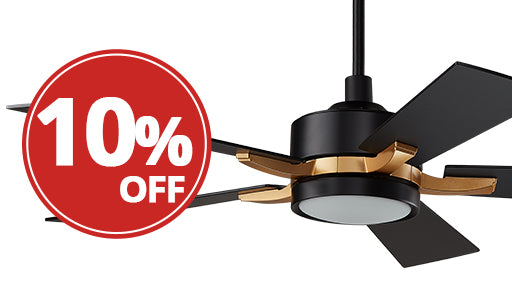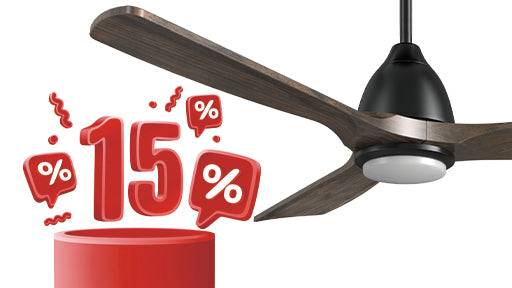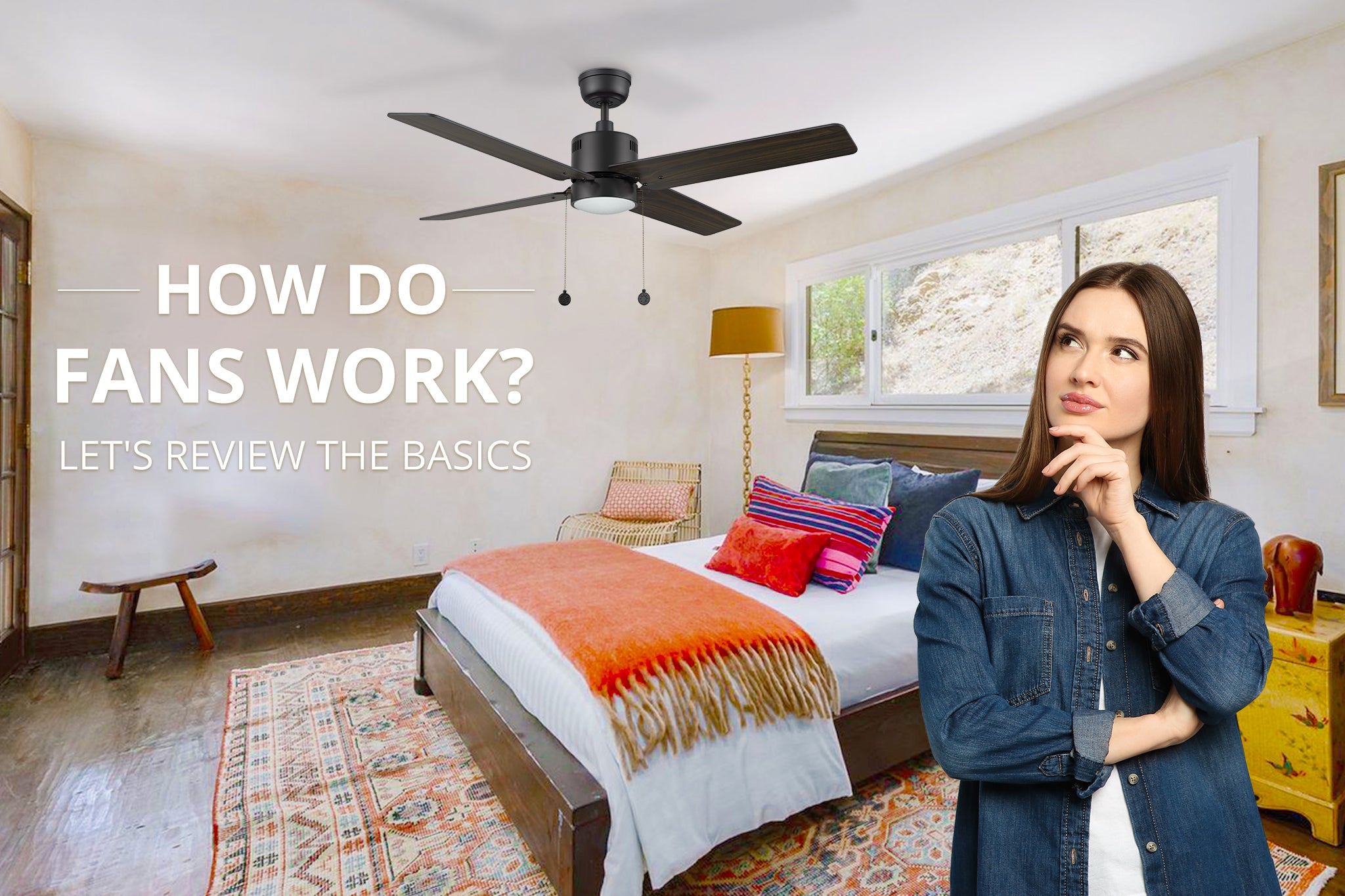
You arrive home, sweating, and you rush inside to escape the heat. You switch on your ceiling fan, melt onto the sofa, and breathe a huge sigh of relief as the cold air soothes you.
Does this sound familiar?
We all rely on fans during the hot weather, but do you ever wonder – 'how do fans work?'
While most people understand the basics of ceiling fans, have you ever thought about the science behind them?
Interestingly, fans add heat to a room. Confused? Think about it like this: if you have a well-insulated room and you introduce an electric fan, then the room will become warmer.
That's because all the electricity that's powering the fan transforms into heat. That means a fan doesn't cool the room, instead it creates a wind chill effect.
Want to learn more about how fans work? Let's get started.
What's the History of Fans?
The first ceiling fans were introduced in the early 1860s and 1870s in the United States. During those times, fans weren't powered by any type of electric motor. Instead, running water was used alongside a turbine to power a system of belts. This would move the blades of two-blade fans.
These systems could assist with several fan units and as a result, they became popular in stores, restaurants, and offices.
In 1882, the first electrical fan was designed by Philip Diehl. Since then, ceiling fans have grown to become the most popular and efficient cooling systems for homes and other establishments.
Diehl eventually designed smaller motors and incorporated lighting kits to improve his initial invention. This resulted in the electrolier ceiling fan, which resembled a mix between a fan and a chandelier.
While the ceiling fan hasn't changed much since the original design, the technology and style have evolved. Today we even use smart fans which are more energy-efficient and can be adjusted using smartphone apps and voice control.
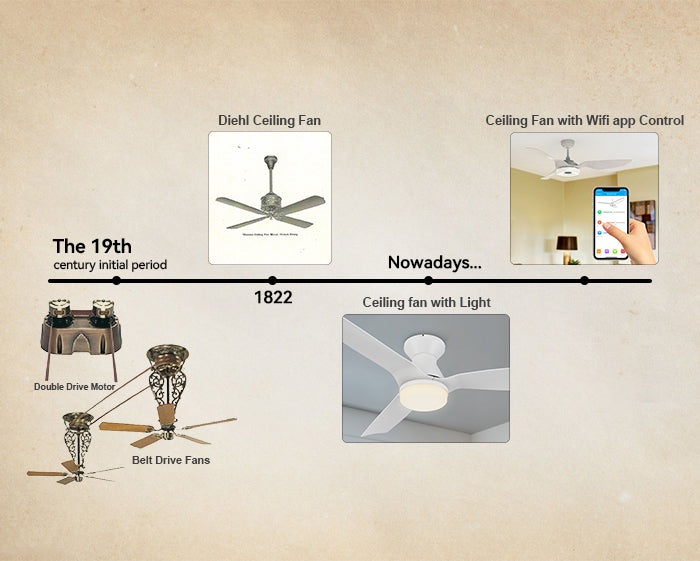
How Do Fans Work?
So, how does a fan work?
All fans operate by shifting the air that is in the area of the fan. This movement creates a breeze that people can feel on their skin. The breeze itself isn't what feels cool. As mentioned, instead, there's a cooling effect from the air of the fan.
This air allows your skin to evaporate sweat faster. In turn, this cools your skin down.
Fans help evaporate sweat from our skin more easily by blowing air around a space. This is how body heat is reduced. The more evaporation that happens, the cooler our bodies feel.
Electric fans feature a motor run by electric current. This motor is affixed to fan blades using a shaft. This shaft is run by the motor and moves the blades at various speeds depending on the speed set for the engine. The number of blades and revolutions per minute of the engine can differ vastly depending on the type and brand of the electric fan.


Rather than cool air if anything electric fans warm it up slightly. This is thanks to the warming of the motors when used. This means that fans may become ineffective at cooling the body if the surrounding air is close to body temperature and features high humidity.
That means that since fans work directly on changing the body temperature of a person, instead of adjusting the temperature of the air, during the summer months it's a waste of energy and money to leave a ceiling fan running when nobody is in the room.
Think about it. When weatherpeople mention wind chill on a chilly winter's day, they're touching upon how the wind boosts convective heat loss.
How Are Electric Fans so Efficient?
All fans work to move the air that's in a room or space. That's whether they're hand-operated or electric.
However, only electric fans are effective in cooling people down. This is because the energy released to wave a manual fan makes heat in the body, and the fan's air doesn't work to offset it.

Plus, the velocity of an electric fan adjusts the air pressure and reduces the temperature.
How Does Sweating Work?
It feels natural that moving air from a fan would help keep our bodies cool. After all, that's what breeze does, along with waving a card in front of your face on a sweltering hot day.
But as temperature is a characteristic of the molecular properties of a substance, the air doesn't become cooler itself by movement. It simply makes us feel cooler when it blows by.
On a warm day, our bodies sweat to reduce heat by the evaporation of that moisture. In still air, the evaporation causes the area around your skin to rise body temperature and hit 100 percent humidity. That makes it ineffective to continue the process.

A breeze, or fan, helps the situation by replacing the warm and humid air with cooler and drier air that welcomes more evaporation.
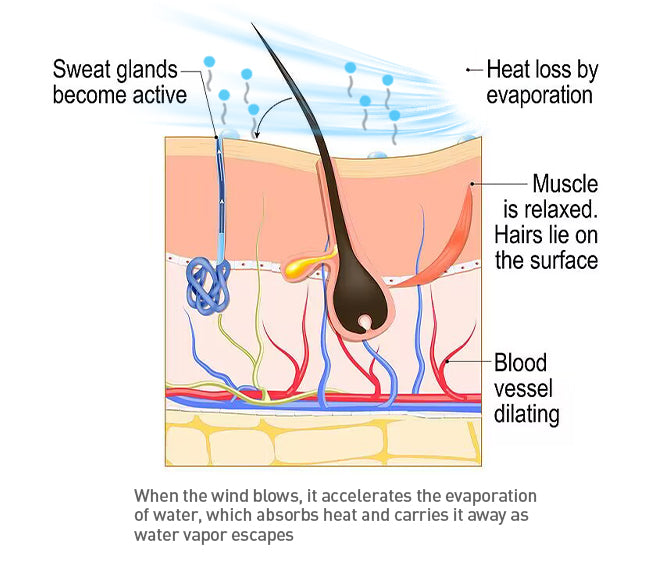
How Do Fans Work: Now You Know
If you've been wondering 'how do fans work' then voila, now you know. Who would have thought that fans don't actually create a cool breeze? Instead, they create a cooling effect using the air surrounding the fan.
At this point, you may be tempted into buying a new fan for the upcoming summer months. Here at Smafan, we're here to help. Check out our bestselling fans here.




